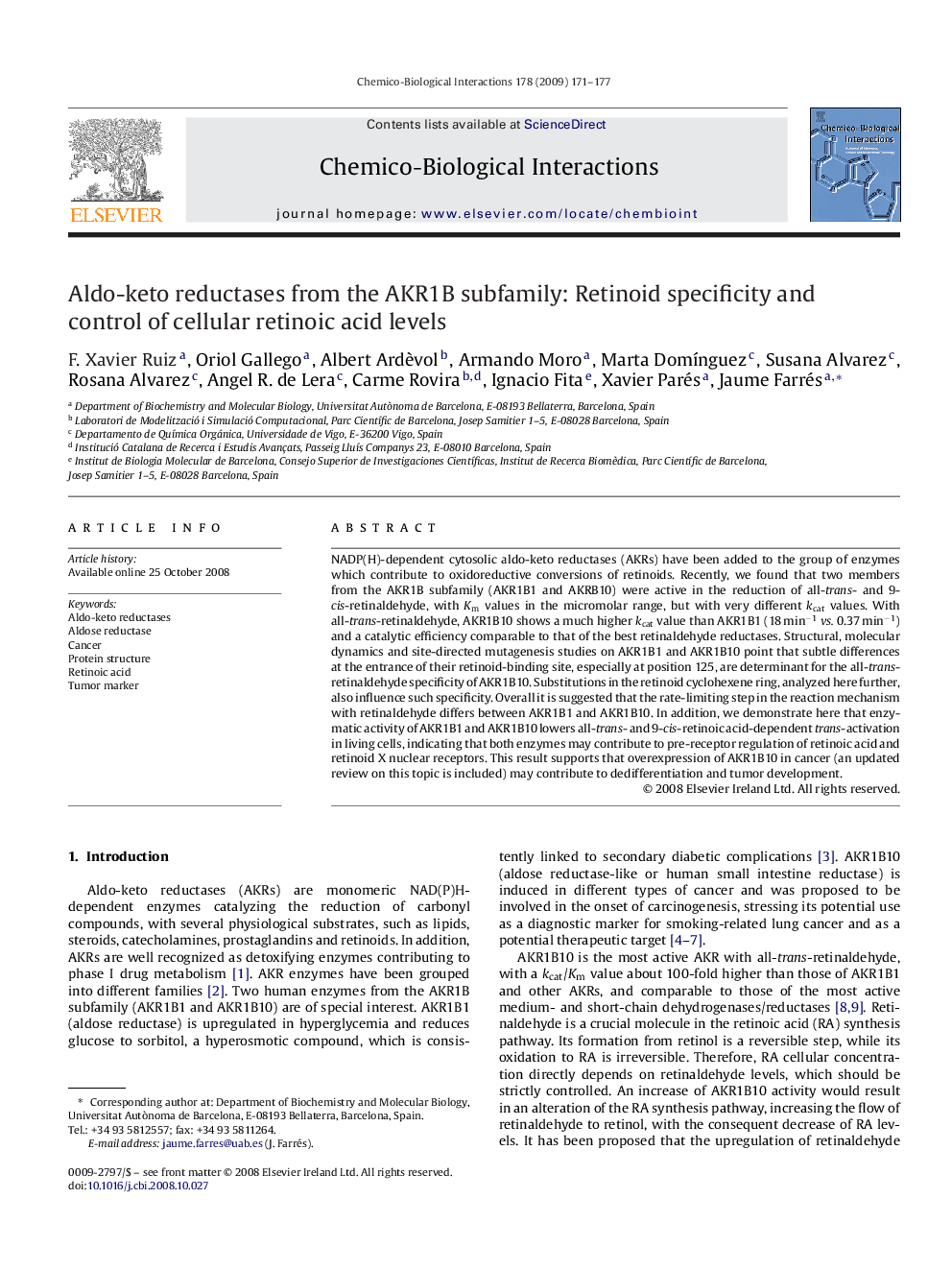| Article ID | Journal | Published Year | Pages | File Type |
|---|---|---|---|---|
| 2582338 | Chemico-Biological Interactions | 2009 | 7 Pages |
NADP(H)-dependent cytosolic aldo-keto reductases (AKRs) have been added to the group of enzymes which contribute to oxidoreductive conversions of retinoids. Recently, we found that two members from the AKR1B subfamily (AKR1B1 and AKRB10) were active in the reduction of all-trans- and 9-cis-retinaldehyde, with Km values in the micromolar range, but with very different kcat values. With all-trans-retinaldehyde, AKR1B10 shows a much higher kcat value than AKR1B1 (18 min−1vs. 0.37 min−1) and a catalytic efficiency comparable to that of the best retinaldehyde reductases. Structural, molecular dynamics and site-directed mutagenesis studies on AKR1B1 and AKR1B10 point that subtle differences at the entrance of their retinoid-binding site, especially at position 125, are determinant for the all-trans-retinaldehyde specificity of AKR1B10. Substitutions in the retinoid cyclohexene ring, analyzed here further, also influence such specificity. Overall it is suggested that the rate-limiting step in the reaction mechanism with retinaldehyde differs between AKR1B1 and AKR1B10. In addition, we demonstrate here that enzymatic activity of AKR1B1 and AKR1B10 lowers all-trans- and 9-cis-retinoic acid-dependent trans-activation in living cells, indicating that both enzymes may contribute to pre-receptor regulation of retinoic acid and retinoid X nuclear receptors. This result supports that overexpression of AKR1B10 in cancer (an updated review on this topic is included) may contribute to dedifferentiation and tumor development.
